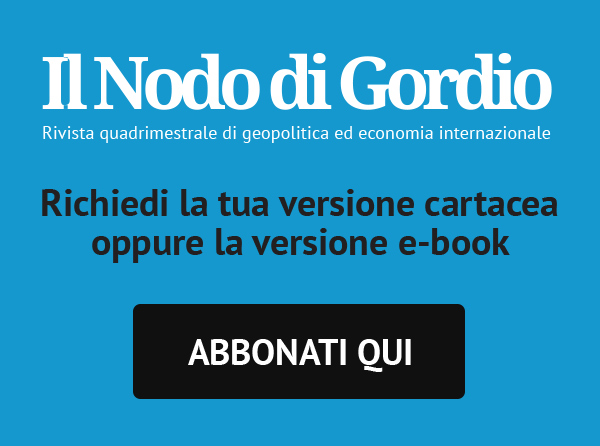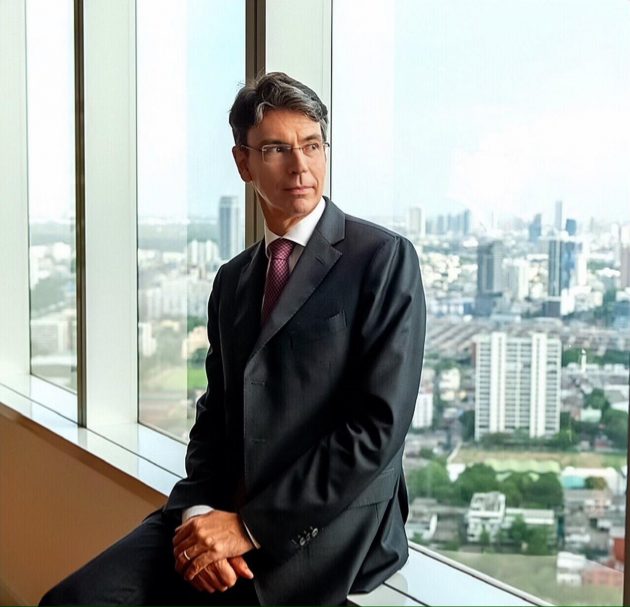
by Luigi Marcadella,European Policy Analyst
From the 40th floor of the All Seasons Place, at 87 Wireless Road, Lorenzo Galanti, Italian ambassador in Bangkok since 2018, enjoys a unique viewpoint to monitor the economic growth of Thailand’s capital city. A development that, as in many other megacities, is also measured by the incessant construction of high-rise buildings that are drawing the futuristic skyline of Bangkok. Our interview with Issara Sereewatthanawut, in the latest issue of the Global Gordian Outlook on Thailand (“The Thailand case: here’s how the new Asian power has dealt with the pandemic”) has stimulated great – and partly unexpected – interest in what is happening almost 10,000 kilometres from Europe, in the Kingdom of Thailand.
Ambassador Galanti, Thailand has been a “case study” for some months now thanks to an impressive organization put in place by the government to deal with the pandemic.
«With about 3,300 cases of Covid overall, and new cases coming only from abroad for over 60 days now, we can definitely say that Thailand was successful in controlling the outbreak. That was made possible thanks to a very effective prevention mechanism, to a sound health system, and to a culture of distancing that is innate in the local culture, as people greet each other by joining hands in the typical “wai”, but without any contact among individuals. In addition, the use of masks was already quite widespread as a protection from fine particulate matter. It should also be said that the Thai population is particularly concerned about the virus, and is therefore very compliant with the measures adopted to contain the outbreak. On Covid therapy, moreover, the experience gained with the treatment of HIV was put to use. On vaccine research, there are 5 ongoing Thai projects, one of which, carried out by Chulalongkorn University, is based on mRNA, and will be tested on humans from October. This project is similar to one underway in the US and if the testing on humans there were to end earlier, this would result in an acceleration of the Thai project as well. The challenge with vaccines lies not only in research, as there will soon be a race in production aimed at making the greatest number of doses available in the shortest possible time. Thailand is running this race. In the context of ASEAN, together with Vietnam, Thailand can therefore thus far be considered as a “success story”. There is of course, here in Thailand too, a strong concern about a second wave. For this reason, entries from abroad are severely limited and subject to multiple Covid tests and mandatory quarantine in hotels designated by the authorities».
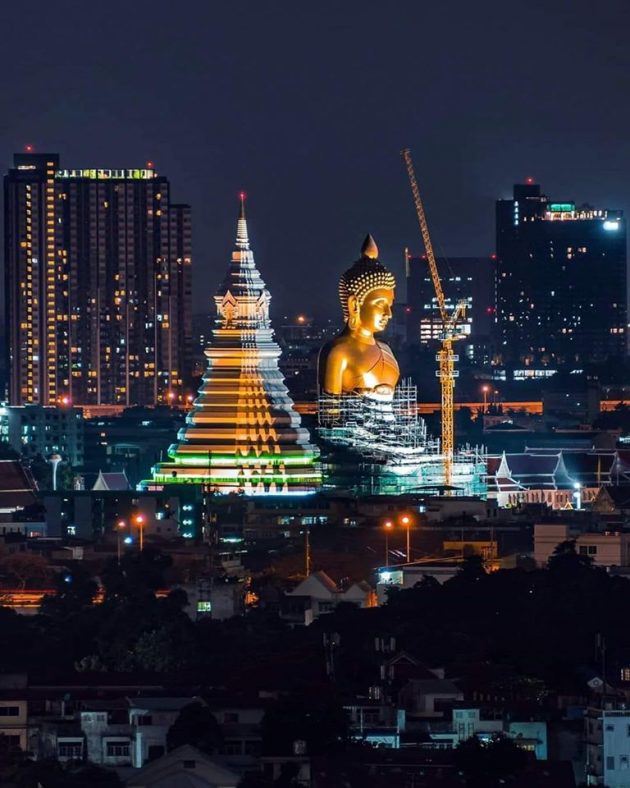
In Southeast Asia, and ASEAN especially, Bangkok has long since carved out a specific geostrategic role for itself. What is the Thai political strategy as a regional power?
«In Thailand in is considered, perhaps correctly, that this immunity will turn into a more decisive factor of attractiveness in the post-Covid world than for example traditional tax incentives, also for investors. However, it is clear that zero tolerance on new cases is an ambitious goal if one considers how the contagion still rages globally. At the same time, the debate over the responsibilities of the pandemic is rampant globally. The “post Covid” world is – and here in Southeast Asia you can feel it more than elsewhere- an increasingly polarized one, in which the recipe for globalization, which had allowed this part of the world to prosper, is strongly put into question by the so-called “decoupling” between the Chinese and the US economies. In this environment, Thailand and other Southeast Asian countries can benefit in the short and medium term from an influx of investments relocated from China, not only Chinese but also by other countries, such as the United States and Japan. This is because one of the elements of Thailand’s attractiveness lies in its ability to maintain excellent relations with both the United States and China, as well as with all other regional powers, such as Japan, Korea and India, and all the ASEAN member States. Thus, Thailand is for example less exposed to being entangled in trade wars. But it is not shielded from technological wars and from the wider consequences of the “decoupling” between China and the United States, which splits markets and imposes to restructure value chains around new criteria. For an economy that exports 70% of its GDP in goods and services, including tourism, this is not a minor challenge».
The COVID-19 pandemic, however, will require a partial rethinking of Thailand’s commercial, production and tourism policies, at least in the short to medium term. What will the Thai government have to change to match health security and the economic development project launched over the past 10 years?
«As in every other country, the dilemma posed by the pandemic is how to maximize health protection while minimizing economic damage. Thailand appears to be prioritizing the protection of public health at this stage. Although the economic activities have almost entirely resumed, the halt to tourism from abroad take a toll on the economy while the very limited entry of entrepreneurs and technicians might slow down some projects. Assuming a rapid paradigm shift, Thailand aims to reposition its tourism (40 million visitors in 2019, of which 25% from China) on a high market segment. A strong emphasis is given to medical tourism, given the quality of Thai medical facilities, which was also demonstrated during the epidemic. In addition, the government supports the creation of a conducive technological environment, particularly with the introduction of 5G networks. Thailand is the first country in ASEAN to deploy 5G services commercially to attract, mainly through the Board of Investments (BoI), investments in advanced sectors, such as smart agriculture, future cars, biofuels, medical services and the digital economy. The flip side of this is the challenge to reduce inequalities. The extraordinary result achieved in poverty reduction from 67% in 1986 to 7.8% in 2017 is somewhat tempered by a marked disparity in the distribution of wealth: the Gini coefficient at 90.2 indicates a high concentration of income in a few hands. Supporting agriculture and SMEs, which are very exposed to the consequences of the pandemic, is therefore crucial. This is why the Thai government has devised a vast program of targeted support measures, which the Parliament approved in early June».
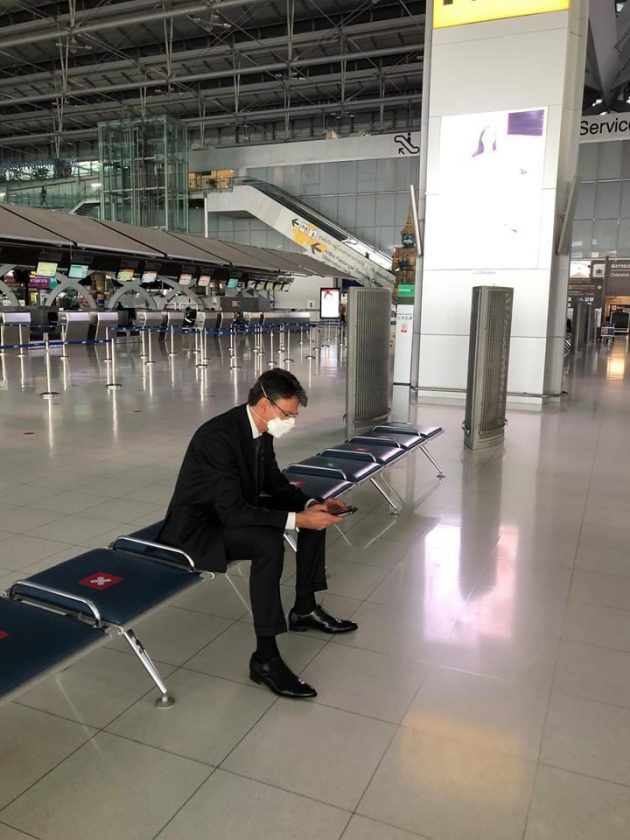
Are the strengths of the Thai economy, low public debt, inflation under control, and a strong currency able to give Thailand a competitive advantage to face external and different shocks in the near future?
«In today’s world, as I hear increasingly here in Asia, the strength of an economy lies not so much in its ability to grow rapidly, but rather in its resilience to external shocks. Thailand has macroeconomic fundamentals that allow it to face an economic crisis. To mitigate its effects, the government has fielded more than € 54 billion in subsidies, subsidized loans to SMEs and liquidity for the corporate bond market, as well as for community development projects. Overall, we are talking about the equivalent of 9% of GDP. Public debt will increase from 42% to 57% of GDP, but that does not seem to pose any serious risks to financial stability. However, the impact of the crisis is estimated by the Bank of Thailand in a 8.1% contraction of GDP. The IMF and the World Bank are more optimistically forecasting -6.7% and -5% respectively. In the absence of mass tourism, it will be important I guess to focus on ensuring continued support to the less well off and to generate job alternatives for the unemployed. Also keep in mind that the recovery may be somewhat slower in Thailand than in the rest of ASEAN, given that the Thai economy is more advanced».
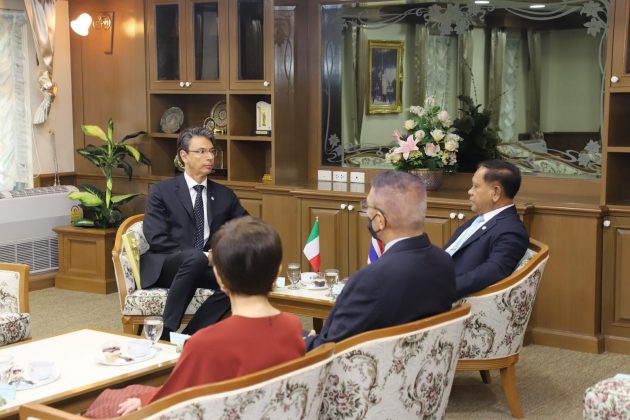
From a domestic point of view, Thailand has experienced many institutional jolts in the last decades. For about five years it has enjoyed a relative political stability. In order to better understand the current Thai political context, would you outline the major “fault lines” in the country?
«There is currently a renewed debate on reconciliation between what are simplistically called, with a chromatic metaphor, “yellow shirts “and “red shirts”. Supporters of former Prime Minister Taksin Shinawatra and his sister Yingluck are called “red shirts”, and supporters of the current leadership are “yellow shirts”. There are also, especially among the urban middle class, young people who recognize themselves in the issues raised by Future Forward, the third largest party in last year’s elections, which then was dissolved for reasons related also to the law on financing of political parties, and has now been renamed Move Forward. This new political entity has its own distinct characteristics. In Thailand, too, social media are a new feature of the political debate, with a disruptive impact as to their ability to influence the political debate and decisions».
As far as Thailand’s external projection is concerned, its geographical position requires a diplomacy which, by force of circumstances, must include a good deal of “equi-vicinity”, to use a word coined by former Italian Prime Minister Giulio Andreotti, between the Chinese superpower and Washington. Especially in this phase of growing tension between the US and China, how is Thai foreign policy being shaped?
«The strong economic, financial and entrepreneurial presence of China, as well as the Chinese origin of a part of the Thai population, stemming from subsequent waves of immigration over the centuries, have obviously an important cultural footprint in Thailand. However, historically, the country also draws some of its traditions and mythologies from India. At the same time, Japan, with its traditionally recognized soft power and its well-established manufacturing companies, represents a model that can also count on local higher education and vocational training institutions related to the Japanese automotive industry. South Korea too, especially in recent years, has become increasingly relevant also from a cultural perspective especially for younger people, also thanks to K-pop and the production of films and TV series that are very popular here. Europe has also historically exerted a cultural attraction, and so have Universities in the UK, the US and Australia. Having said that, Thailand has its own strong cultural identity, and keeps its traditions very much alive. The coronation of King Rama X in May 2019 offered an extraordinary example of the strength of this nation’s cultural traditions. “Equi-vicinanza” is a very appropriate definition, to which I would also add “multi-vectoriality”, genuine multilateralism, and growing regionalism».
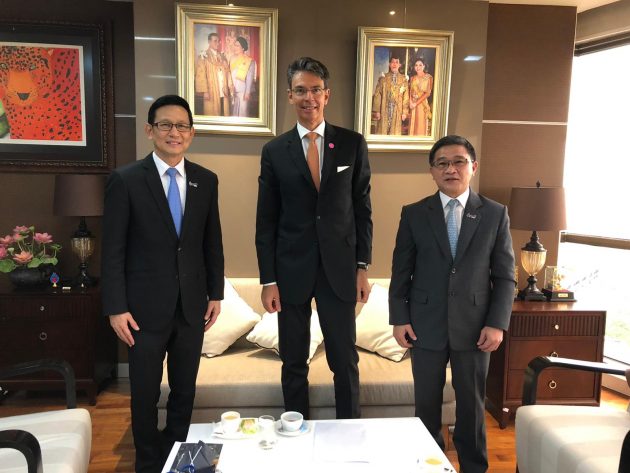
Is its friendly posture in foreign policy instrumental to its economic and commercial ambitions on a regional scale?
«Thailand pursues a 360-degree friendship policy that is consistent with its interests. As a Thai veteran commentator observed a few days ago, ‘’Thailand believes it can help prevent any major power dominating the region and becoming a hegemon in the post-Covid-19 world’’. In this very spirit, it is the centrality of ASEAN, which by acting as a platform for dialogue with its numerous regional partners has the role of projecting stability in the region called by some “Indo-Pacific”. This approach was codified last year, during Thailand’s ASEAN presidency, in a document called “Asean Indo-Pacific Outlook”. ASEAN, with strong impulse also by Indonesia, has thus developed a “vision” that highlights the complementarities existing among the various strategies concerning the region, for example in the realm of connectivity (think of the Chinese Belt and Road Initiative and the US or the Japanese Free and Open Indo Pacific), rather than the differences».
Beyond the Asia-Pacific region, which are the privileged interlocutors of Thailand in Europe and in the rest of the world?
«The European Union is an important partner especially on trade, investments, technology and tourism. The period of relative freeze in relations following the coup d’état in 2014 has now given way to a renewed engagement, which could lead, if both sides so decide, to the resumption of negotiations for a free trade agreement between Thailand and the European Union. The relationship between the Union and Thailand has great potential. The EU has no geopolitical interests in the area. This can facilitate dialogue».
Italy and Thailand share two elements, which are critical for their growth: tourism and a large manufacturing sector. In addition to the Italy-Asean Association (chaired by former Italian Prime Minister Enrico Letta) and the activity of the Ambrosetti Forum, how are bilateral relations between Rome and Bangkok being structured?
«The Italy-Asean Association is actively promoting and supporting activities aimed at bringing the Italian and ASEAN business communities closer. Together with Ambrosetti-The European House, a major Italian think tank, they hold a high-level economic dialogue on a yearly basis between Italian and ASEAN business communities. This initiative has become a model which others partners look at with growing interest, and which is strongly supported by the Italian Government and the Italian Ministry of foreign affairs and international cooperation. Italy is currently launching many initiatives with ASEAN and its member states. With Thailand, we are discussing a number of MoUs on renewables, tourism, scientific and technological cooperation. Yet, even in the age of video-conferencing, personal relationships are fundamental in this part of the world. That is why the “Italy Thailand Business Forum” was created in 2015. It brings together over business leaders from both countries from 40 companies with a turnover of around 400 billion euro. The Business Forum, led by Italmobiliare from the Italian side and by Central Group (owner of the Italian department store brand La Rinascente) from the Thai side, is instrumental in supporting bilateral relations – and not only in business. Thai members of the Business Forum and the Thai Chamber of Commerce/Board of Trade donated two respiratory ventilators to a hospital in Bergamo in April this year, at the peak of the pandemic. Last but not least, the Thai Italian Chamber of Commerce, TICC, plays an active role in supporting Italian companies. The Embassy and the Italian Trade Agency in Bangkok actively collaborate with the Chamber in the promotion of all things ‘’Made in Italy’’ and in supporting the Italian firms’ presence and activities in Thailand. We can build on over 3 billion euro a year of trade in goods, mainly thanks to SMEs but also to major groups such as Leonardo. Our footprint is also linked to the presence in infrastructure and energy of large companies such as Saipem in the gas sector and Ferrovie dello Stato in high speed rail».
The charm and attractiveness of Italy and of all things Italian might also give us some additional advantage in bilateral relations in South-East Asia, despite the geographical distance.
«Italy benefits from a positive image in Thailand, which was underpinned in the previous century by the work of illustrious architects, artists and decorators invited by King Rama IV and Rama V to design buildings and decorate palaces. Corrado Feroci, who was from Tuscany and lived and taught in Thailand during the first half of the 20th century, is considered one of the fathers of contemporary art in Thailand and is a highly appreciated and revered figure to this day. Italy is generally beloved and appreciated in Thailand, where Italian restaurants are numerous and very popular. I don’t remember meeting a Thai person who hasn’t visited our historic cities, our lakes, mountains, islands several times. Italian luxury cars are a recognized status symbol, and so is our fashion and design, including furniture».
You are also Ambassador to Cambodia and Laos. In the regional context, ASEAN is now one of the great centers of gravity of commercial and economic power in Asia. How much has the political agenda of the ASEAN members been affected by the pandemic and the risk of another health related “black swan”?
«The pandemic has brought about a new paradigm, which is that of regional immunity. By capitalizing on the good performance in containing the pandemic not only by Thailand, but for different reasons also Cambodia and Laos, as well as other member states, ASEAN has the opportunity to present itself to the world with very valid credentials. As I said before, it is the resilience to external shocks – and also to natural disasters, to which this part of the world is prone – that make the attractiveness of an economic system in the “post-Covid” era. This is being combined with an acceleration of the digital economy, whose importance has been magnified by Covid, and a strong attention to the issue of sustainability. Italy is very committed to sustainability, also in the light of its co-presidency of COP26 with the UK and in view of the Italian presidency of G20 in 2021. Sustainability is therefore a crucial theme for us in our partnership with ASEAN, which we are actively developing and enhancing even in this pandemic phase».
The supranational elites in the Old Continent and some western circles are wondering how to put “order” into the economic and strategic “disorder” that could provoke a more or less rapid retreat of what we call globalization. In Thailand, but more generally in the emerging manufacturing economies of Southeast Asia, what kind of reasoning prevails on those scenarios?
«I would say that the keyword in this moment of undertow of globalization is regionalization. The value chains are shortening, because companies must factor in more geopolitical risks, as well as risks related to unpredictable events such as pandemics. It is natural in this context to pursue a closer relationship with the countries belonging to the same region. For Thailand, we could probably identify three concentric circles, starting from Asean, then China, Japan and South Korea, and then India, Australia and New Zealand. The relationship with the United States is characterized by a military alliance dating back to 1955 and which is still very robust today, with joint military exercises (Cobra Gold is the main one) and efforts to increase the interoperability of the armed forces of the two countries. However, China is also making headway in this field».
© RIPRODUZIONE RISERVATA



